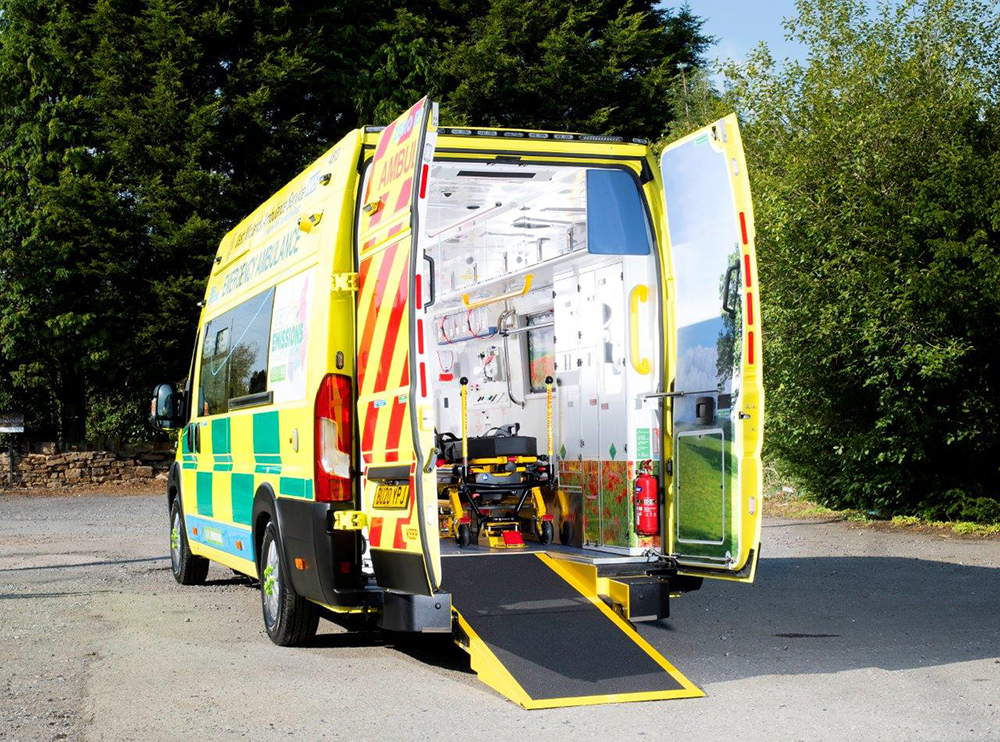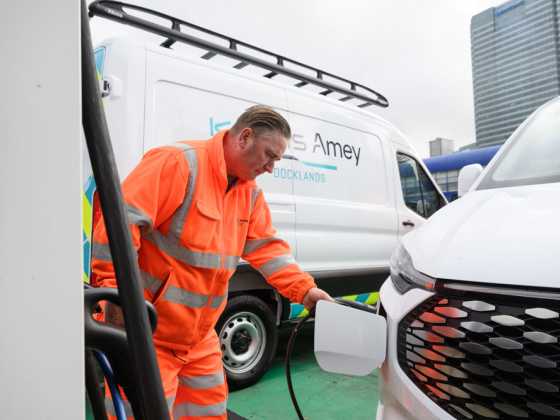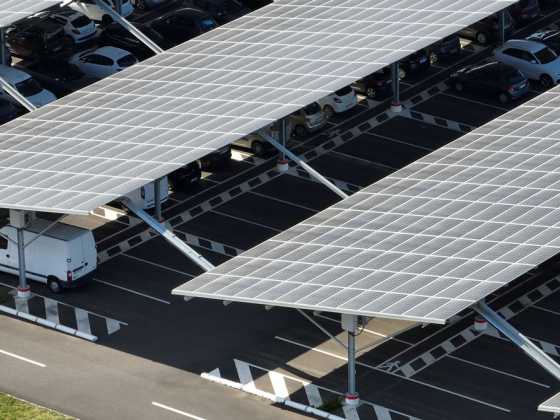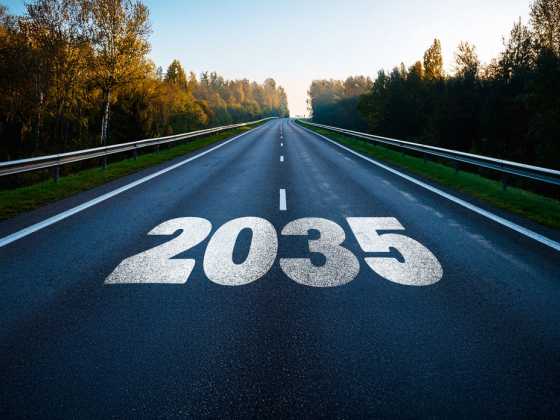Working towards a zero-emission NHS fleet

The NHS has committed to reaching net zero by 2040, and is exploring options for a complete transition to zero-emission vehicles by 2032, with the exception of ambulances which pose a particular challenge. But these challenges are being addressed by various innovative projects and trials
NHS travel and transport is estimated to account for 3.5 per cent of all UK road traffic, and is estimated that decarbonising the ambulance fleet could potentially reduce emissions by 87 ktCO2e every year.
With an overall goal to be net zero emission by 2040, the NHS in England has set itself interim targets to decarbonise. And while some of the NHS fleet can transition to zero emissions relatively easily, others, such as ambulances, have challenges that need to be overcome first. These vehicles are needed to save lives, and are required to travel at high speeds to get to emergencies. They therefore cannot afford the downtime from charging. The weight of the vehicles, plus the need to power high levels of equipment, adds to the electrification challenges.
Electric ambulance trial
West Midlands Ambulance Service is trialling an electric ambulance known as the Electric Dual Crewed Ambulance (E-DCA) by conversion specialist VCS.
The ambulance is powered by lithium-ion batteries, which are situated in the underside of the ambulance floor pan in a specifically-designed and compliant enclosure, ensuring it has a low centre of gravity. It has a power output of 129bhp (96kW), a top speed of 75 mph and can achieve a range of 105-110 miles with a recharge time of 4.25 hours.
The ambulance includes a number of design elements that ensure it is as versatile and usable as possible. These include rear door damp assist systems, hospital chair gangway accessibility, intelligent run lock management, and an OLED graphical HMI keypad.
Decarbonising ambulance fleets
London Ambulance Service has made significant inroads in the decarbonisation of its fleet.
As well as having three electric motorcycles on the fleet, and a number of hybrid vans and plug-in hybrid cars, London Ambulance Service has recently taken on a fleet of electric Mustang Mach-E cars for its Fast Response Unit. Seven of the cars are already in use with a further 35 being delivered over the next few weeks.
It takes just 40 minutes to charge the Mustang battery to 80 per cent and that allows the car to travel more than 300 miles, which is about ten times further than an ambulance would normally cover on a shift.
The blue lights and sirens are powered by a 12-volt battery rather than the car’s drive battery but the Service is fitting solar panels to the cars to make them even more environmentally-friendly.
As part of a £31 million investment programme, the Service is also investing in charging infrastructure across its sites and ambulance stations, as well as recruiting new mechanics and upskilling current mechanics to help maintain its growing modern fleet.
London Ambulance service has also taken delivery of nine brand new bespoke ambulances which are lightweight, greener and more efficient than the Service’s current ambulances and meet the clean air zone targets in London.
The MAN ambulances are replacing older vehicles in the fleet and were designed after consultation with frontline crews to ensure they are suitable for the demands of caring for patients in the capital.
A further 11 MAN ambulances and 112 ambulances have been ordered, and four fully electric ambulances are expected to be delivered to LAS later this year.
Hydrogen power
The world’s first hydrogen fuelled ambulance, created by ULEMCo, was unveiled at COP26 in Glasgow in 2021.
Named for Zero Emission Rapid Response Operations ambulance (ZERRO), the vehicle has a hydrogen fuel cell range extender with an electric drive, a low frame chassis and a bespoke lightweight ambulance body, with a range of 300-miles. Specific features such as the low access floor and a frame-based body enable it to meet the payload requirements of the health service, and the hydrogen fuel cell ensures fast and flexible refuelling.
ULEMCo has recently been awarded £3.9 million by government, matched by industry to a total £7.9 million, for a major project with its partners to develop solutions for hydrogen powered vehicles. The ‘HYER Power’ project will develop a hydrogen fuel cell range extender module that will integrate into electric vehicles used for specialist applications such as ambulances, fire engines and street sweepers.
Key outcomes of the project will include a production-ready zero-emission ambulance as a result from the work already completed by ULEMCo under the ZERRO project.
Single responder vehicles
South East Coast Ambulance Service NHS Foundation Trust is to trial three fully-electric Mercedes-Benz e-Vitos as Single Responder Vehicles later in 2023.
The vehicles will initially be based out of three Trust sites where heavy-duty vehicle chargers are installed – Polegate, Thanet and Gatwick. The chargers will be able to charge the vehicles in as little as 30 minutes.
As charging infrastructure is developed across the Trust’s sites, it is hoped the vehicles will be tested in other areas to gather wider feedback from staff.
In addition to its traditional ambulances, South East Coast Ambulance Service NHS Foundation Trust currently operates a fleet of 118 SRVs, which is made up of a majority of diesel vehicles as well as 15 hybrid petrol Mitsubishi Outlanders.
The Trust will provide feedback to NHS England and gather information on the use of the vehicles for future developments.
Mental health response vehicles
Eight ambulance trusts are trialling 21 zero-emission vehicles of various types, with six of the new green vehicles dedicated to mental health response in the community – designed to cut emergency response times for people with mental health needs and help reduce demand on traditional double-crewed ambulances.
The dedicated mental health response vehicles, which are already in action in the North West, differ in design from traditional ambulances – while they still carry the equipment which enables them to respond to the most serious life-threatening emergencies when required – they have fewer fluorescent markings and a much less clinical interior to help put patients at ease.
The all-electric vehicles can be deployed as a rapid response vehicle when someone is experiencing a mental health crisis, providing a safe space for healthcare workers to support patients with mental health needs.
Other vehicles in the new green fleet include those equipped to attend less severe emergencies and those designed to transfer seriously ill patients to and from high dependency units – helping to relieve pressure on traditional ambulances and ensure patients get to the right location for the right treatment.






